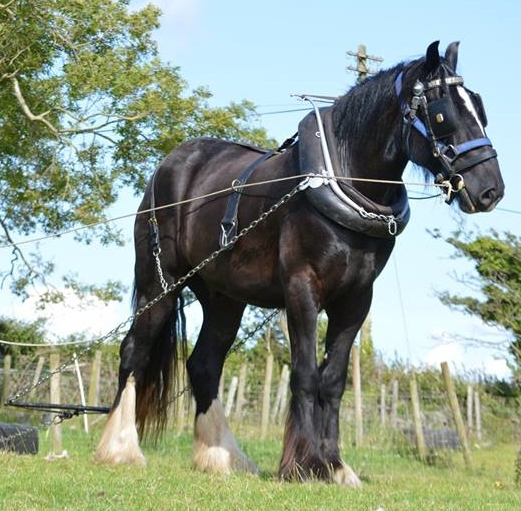The English Great Horse was valued during the reign of Henry VIII, when stallions measuring less than "fifteen handfuls" could not be kept, but the increasing role of gunpowder brought an end to the use of heavy horses in battle. Oliver Cromwell's cavalry favoured lighter, faster mounts and the big horses began to be used for draught work instead. During the sixteenth century, Dutch engineers brought Friesian horses with them when they came to England to drain the fens, and these horses may have had an influence on what became the Shire breed.
From this medieval horse came an animal called the Old English Black Horse in the seventeenth century. The Black Horse was improved by the followers of Robert Bakewell, of Dishley Grange in Leicestershire, resulting in a horse sometimes known as the "Bakewell Black". Bakewell imported six Dutch or Flanders mares, notable since breeders tended to concentrate on improving the male line. Two different types of black horses developed: the Fen or Lincolnshire type and the Leicester or Midlands type. The Fen type tended to be larger, with more bone and extra hair, while the Midlands type tended to have more endurance while being of a finer appearance.
Shire stallions may be black, bay, brown or grey. They may not be roan or have large amounts of white markings. Mares and geldings may be black, bay, brown, grey or roan. In the UK stallions may not be chestnut,[1] but the colour is allowed by the US association. The average height at the withers of grown stallions is about 178 cm (17.2 hands), with a minimum of 173 cm (17.0 h); geldings should stand at least 168 cm (16.2 h), and mares no less than 163 cm (16.0 h). Weight ranges from 850 to 1100 kg (1870 to 2430 lb) for geldings and stallions, with no set standard for mares. The head of a Shire is long and lean, with large eyes, set on a neck that is slightly arched and long in proportion to the body. The shoulder is deep and wide, the chest wide, the back muscular and short and the hindquarters long and wide. Not too much feathering is to occur on the legs, and the hair is fine, straight, and silky. The Shire is known for its easy-going temperament. Shires have been identified to be at risk for chronic progressive lymphedema, a chronic progressive disease that includes symptoms of progressive swelling, hyperkeratosis, and fibrosis of distal limbs. The disease is similar to chronic lymphedema in humans.
